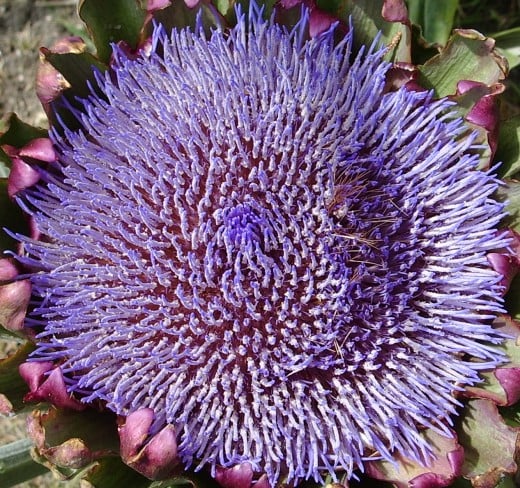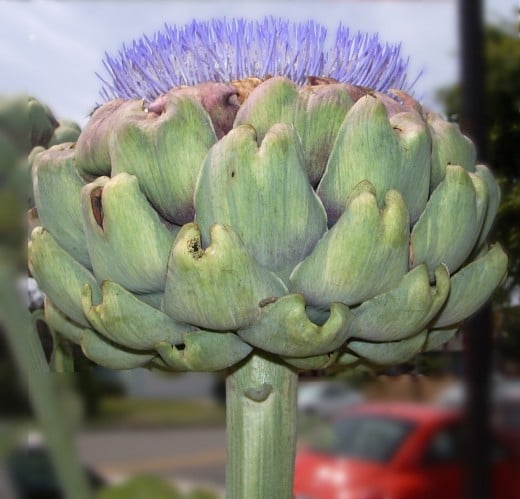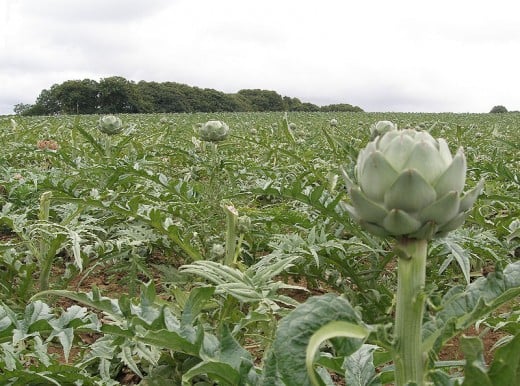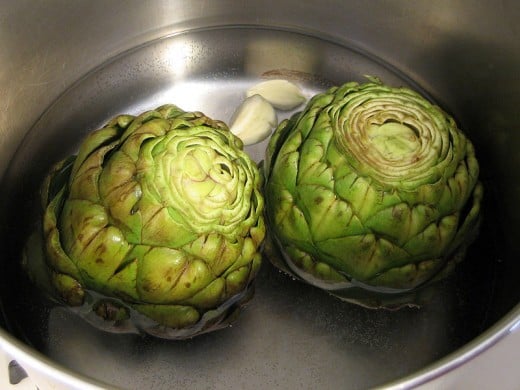What are the Benefits of Artichoke
Where did the Artihoke Originate
The plant is thought to have originated from northern Africa, in the Maghreb region where it still grows wild. Arabic traders brought the artichoke north in their travels and the name is derived from Ardi-Shoki which means ground thorn.
A variety called the cardoon, grows in the southern Mediterranean. During the Greek occupation of Sicily in the sixth century B.C.E. the Greeks introduced it to Italy. During this time the flower heads and leaves were eaten. First century Rome adopted the artichoke from the Greeks. Romans called the vegetable carduus. Cultivation of the plant continued and the agriculturists of the time improved the size of the flower bud.
Artichokes were known to be grown in Naples in the ninth century C.E. and spread to Florence in 1466. Italian notaries documented the appearance of the artichoke in Venice in 1480 and they were documented in southern France in 1554. The Dutch introduced this thistle to England in 1530.
In the early nineteenth century the artichoke made its way to California and Louisiana.
Today the main producers of artichoke are Italy, Spain, France, and the United States. The California Monetary County grows almost 100% of the artichoke produced in the United States.



Artichoke as Medicine
The artichoke is high in protein with an average of almost three grams. It also contains vitamins C, B1, B2, B3, B5, B6, and B9. They also contain calcium, iron, magnesium, phosphorus, potassium, and zinc. Artichoke (the flower bulb, leaves, and roots) contain arginine, valine, histidine, isoleucine, leucine, lysine, methionine, threonine, tryptophan, and phenylalanine.
Polysaccharide insulin, a plant form of insulin, has also been found in artichoke. For that reason it is thought that artichoke extracts are good for diabetics.
Leaf extracts of artichoke are found in anti-aging, moisturizers, toners and astringents. It is often listed as cynara scolymus extract in these products.
There are claims that artichoke will help with gout, anemia, and obesity. The broth of boiled artichoke is said to lower blood sugar levels and reduces blood pressure. None of these claims have been substantiated with scientific research.


Artichoke as Food
Artichoke Varieties
There are at least four popular varieties of artichoke with literally hundreds of cultivars grown worldwide. The most popular are;
- Green Globe which grows year round with maximum production in the spring
- Desert Globe which flowers from December through March
- Big Heart which grows year-round with a lull in early April
- Imperial Star which grows year-round and peaks in the spring
Artichoke buds and stems can be boiled, roasted, sauteed, and microwaved. A firm heavy bud is a good indication of "ready to eat" artichoke. They will dehydrate rapidly so it's best to eat them shortly after harvest. They can be refrigerated for up to one week, unwashed, in a plastic bag in the vegetable crisper.
To prepare the bud cut the stem about one inch from the flower head. Remove the outer petals which are usually thorny and tough. Cut off the top quarter then rinse in cold water to remove dirt and dust. The ideal size for artichoke buds is three and a half to four inches in diameter.
To prevent browning you can rub a sliced lemon on the cut areas or, if boiling, add a bit of lemon juice to the boiling water.
Because artichoke juice stains easily it is recommended that rubber gloves be worn during preparation.
Microwaving
Artichokes should be microwaved for six to eight minutes at high power (1,000 to 1,500 watt oven) or until a petal near the center comes away easily.
Boiling
Artichokes should be cooked in a large pot in three quarts of water. Place the heads stem side down and cook for twenty to forty minutes until an inner petal comes out easily. Adding salt and sugar to the water (along with lemon juice) will enhance the flavor.
Roasting
Choose a pan that will accommodate the buds. Line with aluminum foil (unprotected aluminum pans will be permanently stained by artichokes) and coat the foil with olive oil. Place the buds cut side down (stem facing up) on a lemon slice. You can also place a garlic clove on the lemon prior to placing the artichoke bud. Seal the pain with foil and toast at 375° F for forty to fifty minutes or until the stem end can be easily pierced with a fork.
Sauteed Artichoke
Artichokes can be sauteed if sliced down the center and then quartered. This after the preparations mentioned above. This is actually a process of boiling then frying in the same pan. First, place the prepared "chokes" in the sauté pan with about a cup of boiling water. Simmer for five minutes and remove the chokes and clean the pan. Heat the pan to medium high, add olive oil, and then the chokes. Stir for five minutes and then serve. The sauteing could include garlic and onions for additional flavor.
Precooked and Pickled Artichoke
Of course if the preparations above are not practical one can buy precooked and picked artichoke. Be aware, however, that pickled artichoke is both cooked and preserved in vinegar which will surely alter the taste.
Less than Usual Artichoke Recipes
Artichoke Benedict
Ingredients
- Four (4) medium artichoke buds
- Four (4) slices Canadian bacon (you want it round)
- Four (4) eggs
- Hollandaise sauce
Directions
- Cook artichoke as described in the Boiled Artichoke section above
- Brown the Canadian bacon in a skillet and set aside on paper towels to cool
- Poach eggs in boiling salted water. By stirring the water gently and gently dropping the egg into the water at the same rotation you can keep the eggs intact. After three minutes remove to a clean plate with a slotted spoon
- Place the cooked artichoke on a plate and open to expose the center
- Remove the "choke" (fuzzy center) and discard
- Place the bacon rounds into the center
- Top with poached egg and top with Hollandaise sauce
Hollandaise Sauce
Ingredients
- Three (3) egg yolks separated into a small bowl
- 1/4 Cup water
- 2 Tablespoons lemon juice
- 1/2 Cup butter (unsalted)
- 1/8 teaspoon paprika powder
- 1 pinch or red pepper (cayenne works well here)
Directions
- In a small saucepan gently heat beaten egg yolks, water, and lemon juice.
- Cook slowly until the mixture just starts to bubble stirring constantly.
- Add one pat of butter at a time until incorporated into mixture. This is a total of one stick of butter cut into Tablespoon sized pats. About eight (8) pats.
- Add the dry spices and salt to taste
- Use immediately
Grilled Artichoke
Start with prepared, boiled artichoke as described above. In a quart sized resealable bag add 1/4 Cup olive oil, 1/4 Cup balsamic vinegar, 1/4 Cup water, 1/4 Soy sauce, and 1 Tablespoon minced ginger.
Remove the inner leaves, chokes (fuzzy bits) and purple petals from the artichoke. Drop the buds into the bag and shake until the artichoke is evenly coated. You can seal the bag if you wish and store in the refrigerator overnight for deeper flavors.
Prepare the grill with a solid bed of medium hot coals or a medium flame on a gas grill. Lightly oil the grill surface to prevent sticking. Drain the artichokes and cut in half down the center of the stem to the cut tip. Place the buds, cut side down, on the grill and cook until lightly browned. Turn the cut buds over and grill for an additional three to four minutes or until the cut tips are just slightly charred. You can add some of the marinade from the bag after turning to add to the flavor.
Serve immediately.











